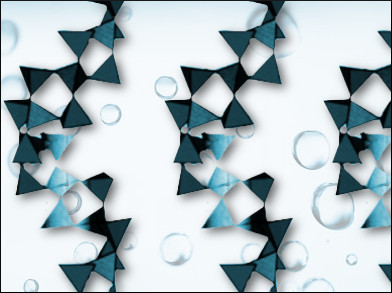Hydrogen could be used as an emission-free and sustainable fuel. Electrochemical water splitting is a promising method for the production of hydrogen. However, better electrocatalysts for both the hydrogen evolution reaction (HER) and the oxygen evolution reaction (OER) are still needed.
Holger Dau, Free University Berlin, Germany, Matthias Driess, Technical University of Berlin, Germany, and colleagues have found that alkali-metal cobalt borophosphates can act as efficient and stable catalysts for both the HER and the OER. The team synthesized the two borophosphates LiCo(H2O)2[BP2O8]H2O (LiCoBPO) and NaCo(H2O)2[BP2O8]H2O (NaCoBPO) using a mild hydrothermal synthesis. The compounds form chiral helical structures.
Both of the synthesized borophospates can be used as catalysts for water splitting under alkaline electrochemical conditions. They can be reversibly switched between the HER and the OER simply by changing the applied electrode potential. This is due to their transformation to the respective catalytically active species under electrochemical conditions: a reduction of the cobalt to metallic Co(0) favors hydrogen production, while an oxidation to Co(III) species promotes oxygen generation.
The catalysts have low overpotentials for both HER and OER and provide high energetic efficiencies. The team verified the long-term stability of the material by applying a current for over 2.5 months. According to the researchers, further catalyst optimization could be possible by replacing the cobalt with other redox-active metals.
- Helical cobalt borophosphates to master durable overall water-splitting,
Prashanth W. Menezes, Arindam Indra, Ivelina Zaharieva, Carsten Walter, Stefan Loos, Stefan Hoffmann, Robert Schlögl, Holger Dau, Matthias Driess,
Energy Environ. Sci. 2018.
https://doi.org/10.1039/c8ee01669k



